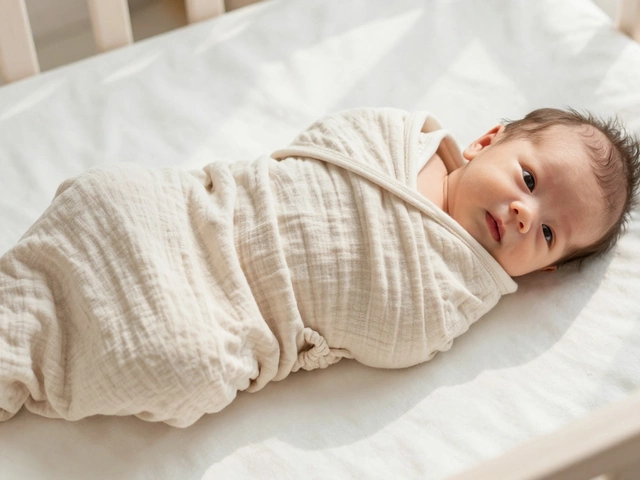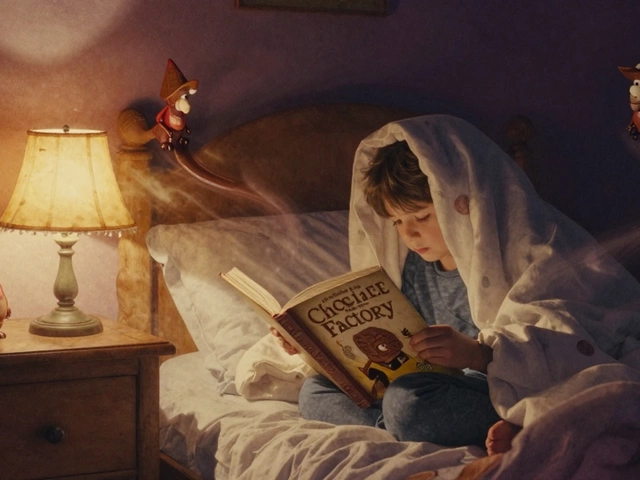
Picture this: a sleepy newborn, tucked snug against your chest, calm and warm while you enjoy rare hands-free freedom. It's easy to see why baby slings are everywhere—parks, airports, social media feeds. But a question nags a lot of new parents: does carrying your little one in a sling put their spine at risk? This worry pops up in Facebook groups and at doctor’s visits, often fueled by mixed opinions and outdated myths. If your mind is doing cartwheels over what’s safe, you’re not alone. Real talk—babies’ spines are delicate, but our instincts to keep them close aren’t at war with their health. What really matters is baby sling safety, design, and technique.
Understanding Your Baby's Spine: What Makes It Vulnerable?
Newborns come into the world like little flexi-dolls—packed with wobbly cartilage, not hardened bone. Their spines look like straight lines, which over months develop the beautiful S-shape adults have. This process, called spinal maturation, is super sensitive. When babies are born, their vertebrae (the bones in their spine) aren’t fused or hardened. Imagine a stack of jello blocks with soft disks between them—yep, that’s your baby’s back.
By about six months, babies start developing neck and core strength. Those milestone moments, like holding up their head and rolling over, are all about muscles and bones catching up. In the early days, their heads are much bigger compared to body size than in older kids—think giant marshmallow on a toothpick. That means their necks and upper spines work extra hard to support that noggin. The World Health Organization actually suggests not propping infants upright for long stretches before they’re ready, because their spines need to stay in their natural C-curve.
But here’s a fact some new parents miss: babies are born to be held. In many cultures, keeping a newborn close is the norm, and babies thrive in this setup. Their heart rates drop, they cry less, and their bodies actually regulate temperature and breathing better. Holding a baby in arms or a sling isn’t a modern trend. It's hardwired into how they grow. The trick is, we need to mirror the way a human arm holds a newborn—supporting the head, neck, and that happy C-curve posture—when using slings.
Why does all this matter for babywearing? A poorly fitted carrier can let gravity work against those wobbly structures, just when bones and discs are forming. If an infant’s back gets forced flat, twisted, or loaded unevenly, you could see issues like muscle fatigue, alignment problems, or, in rare cases, motor delays. But a good sling, used the right way, allows your baby to move, curl, and stretch almost as naturally as being in your arms. In short, the spine's vulnerability is exactly why sling technique matters.
One real-world stat drives this home: a widely cited German study analyzing hundreds of infants found the risk of hip dysplasia (shallow hip sockets) was higher in babies improperly carried in ‘crotch-dangler’ slings than with ergonomic carriers that let knees sit above the bum. While that's about hips, not spine, it highlights that anatomy-friendly positioning—including spinal support—matters. Think about spinal health the same way you would about car seat safety: it’s not about all seats being bad, but about how you use the right one, the right way.
Different Types of Baby Slings: Not All Are Created Equal
Walk into a baby store (or scroll online), and you’ll find a dizzying menu of carriers: stretchy wraps, ring slings, soft structured carriers, and Mei Tais. So, which one is best for the spine? The answer isn’t as simple as you’d hope, but here’s a breakdown to clear things up.
Stretchy Wraps are those yards-long fabric pieces you see tied in intricate knots. They create a snug pouch, holding a newborn right against your chest. When tied correctly—think fabric supporting from knee to knee and baby sitting in a frog-like pose—they’re among the most spine-friendly options for the first few months.
Ring Slings—that single-shoulder carrier looped through a ring—give flexibility and quick on-off. But there’s a catch: because weight is distributed unevenly, these are best for short-wear times, especially as baby gets heavier. Proper positioning here is key: the seat should cup the baby’s bottom, not pull their spine straight or let them slump sideways.
Soft Structured Carriers (SSC) look like mini hiking backpacks and often include buckles and padded straps. Good SSCs are adjustable and let you create a deep seat for the baby (again, knees above bum—think frog squat). If the carrier is too big for a newborn, though, their spine can be forced flat. That’s why most brands suggest using infant inserts or waiting until babies meet weight and head control minimums.
Mei Tais are hybrids, combining features of wraps and carriers, often with wider fabric bases. When tied to support baby’s thighs and back, they work well for both newborns and older babies.
The real spine risks often come from “bag-style” slings—those deep, unstructured fabric pouches. These can fold a baby almost in half, pressing chin-to-chest and restricting breathing and proper alignment. The U.S. Consumer Product Safety Commission issued warnings about these years ago, linking improper use to suffocation cases. Big yikes, right?
Here’s something else: carriers labeled as ‘ergonomic’ are sometimes more marketing than medicine. Always check if the carrier ensures the ‘M-position’ (knees higher than bum) and maintains gentle C-curve support along the back. Before choosing, look for certification from groups like the International Hip Dysplasia Institute and make sure the model passes ASTM safety standards. Checking those boxes offers peace of mind that design backs up the health claims.
Below is a quick comparison of different carrier types and their key features for spinal support:
| Carrier Type | Best Age | Spinal Support Level | Cautions |
|---|---|---|---|
| Stretchy Wrap | 0-4 months | High (if tied correctly) | Loose tying causes slumping |
| Ring Sling | 0-4 months, up to toddler | Medium | Risk of uneven support, short wears |
| Structured Carrier | 4+ months | High (with newborn insert) | No insert for newborn risks flat back |
| Bag-Style Sling | Not recommended | Poor | High risk of spine and airway issues |

Risks, Benefits, and What Science Says About Baby Slings and the Spine
The debate over baby slings isn't new. The mainstream worry about carriers and spinal health exploded a decade ago, triggered by reports of hip dysplasia tied to some carriers, and tragic suffocation incidents linked to unsafe sling use. Naturally, that fear trickled down to worries about curved and vulnerable spines.
Here's what research actually says. The Pediatrics journal published a study following hundreds of babywearing families in Europe over the first year. No increase in spinal disorders was found in babies worn in ergonomic carriers or wraps that supported head and neck, even with daily multi-hour use. On the flip side, in slings that slouched babies’ heads forward or allowed their backs to arch unnaturally, minor postural issues and discomfort did show up—but no permanent deformities.
The benefits stack up when slings are used correctly. Babywearing often means less flat-head syndrome (positional plagiocephaly), fewer colicky episodes, and an occasional break for your tired arms. Skin-to-skin touch and swaying movement mimic ‘in-arm care.’ Some NICUs in Australia even use ‘kangaroo care’—a medicalized version of babywearing—with better weight gain and shorter hospital stays.
But let’s be honest: nothing’s risk-free. When parents rely on ill-fitted or unsafe carriers, or don’t read the instructions, problems pop up. The most common spine-related issues come from two slip-ups: upright carriers that don’t support a ‘deep seat’ (knees and bum make the baby look like a capital “M”), and slings that press baby’s chin down, curving the airway. A handful of case reports connect improper carrier use to back strains or ‘military neck’ (straightened cervical curve) from over-rigidity—rare, but worth knowing.
Want the best of both worlds? Choose a carrier that supports that curved newborn posture and always lets your baby's face be visible and kissable. Think of your carrier as a “second set of arms”—never a strap-filled gadget that leaves your kiddo dangling. Adjust as they grow and their needs change.
- Some pediatricians suggest the ‘TICKS’ rule for safe babywearing:
- Tight: Sling is snug and supports the back
- In view at all times: Baby’s face is visible
- Close enough to kiss: Baby’s head is on your chest
- Keep chin off chest: There should be space under baby’s chin
- Supported back: Baby is held in natural position
Every carrier comes with a learning curve, so practice at home and spot-check your baby’s position in mirrors. If something feels wrong—wild twists, slumping, or baby fussiness—listen to your instincts, and switch it up. Never use damaged or recalled products. And if your baby was premature or has known spine problems, check with your pediatrician first.
How to Use Baby Slings Safely: Real Tips for Happy, Healthy Spines
Good news: baby slings, when chosen and used right, fit perfectly into our busy, loving lives—not against your baby's healthy spine. It’s all about skill, observation, and the right carrier for your needs. Here are the hands-on tips you wish came with every sling.
- First, pick a carrier that matches your baby's age and size. For newborns, stretchy wraps or ring slings are gentle and adaptive. Move to soft structured or woven wraps once your baby has solid head control, usually after four months.
- Every time you put baby in, do a quick posture check: is their back gently rounded? Knees higher than the bum, forming that “M”? Can you easily see their face and kiss the top of their head? If yes, you’re on the right track.
- If you’re worried about getting it wrong, look for in-person babywearing groups or certified educators (like those listed by Babywearing International). They’ll check your fit, spot mistakes, and show you little tweaks you never see in manuals.
- Babies grow fast. Regularly adjust your carrier and double-check fit every few weeks, especially after growth spurts, new milestones, or switching between summer and winter clothing layers.
- Watch out for warning signs: red marks, skin chafing, or baby arching away from the carrier mean something is off. Pain or fatigue while wearing? Spread the weight by adjusting straps or switching shoulders.
- Never use thick blankets yet—it shifts baby’s position and risks overheating and extra chin-to-chest curling. Dress them light if it’s warm, and keep checking for sweating or overheating.
Experts agree: when slings are safe, they don’t just help parents—they actually help babies develop strong postural muscles. Gentle movement in a well-fitted carrier encourages balance and spatial awareness, kind of like beginner-level tummy time (but from a cuddle position). It should never replace floor time or supervised play, though. Mix and match babywearing with other movement-friendly routines through the day.
Having the right gear is one thing, but confidence is everything. Babies imitate your calm—so if you’re relaxed in your carrier, chances are they will be too. Drop the guilt, ask for help, and trust what your arms already know: babies are meant to be close, and baby slings, used mindfully, honor both your needs and your baby’s healthy, growing spine.



